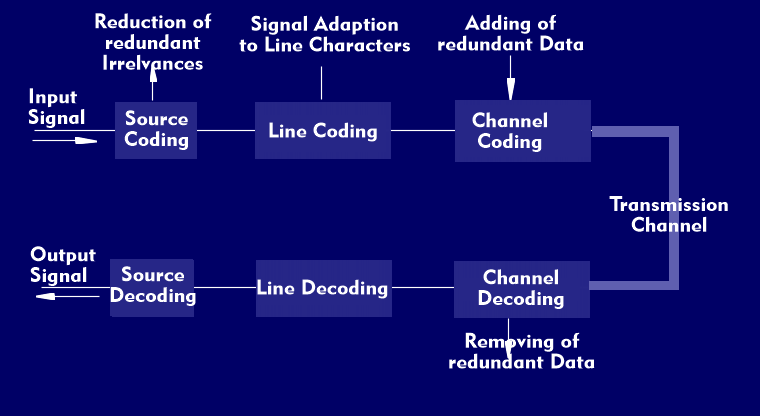line coding
In addition to source coding and channel coding, line coding is another coding used in transmission systems. It works on the physical layer and ensures that the signal to be transmitted is adapted to the properties of the transmission medium. In line coding, the digital signals to be transmitted are converted into a suitable line code by recoding.
Line codes can be selected according to their behavior with respect to interference, or with respect to freedom from DC current, running digital sum( RDS), clock recovery, redundancy, or even to reduce the step rate.
Line codes are usedin all transmission systems: In local area networks and wide area networks, on buses, in mobile networks, optical networks and IP networks. Such codes can be biphasic or ternary, they can go to zero after each level changeor consist only of positive and negative signal amplitudes. Well-known line codes used in ISDN interfaces are Alternate Mark Inversion( AMI) applied in the S0 interface, High Density Bipolar (HDB3) in the S2M and UK2 interfaces, and 4B3T coding and 2B1Q coding in the UK0 interface. In local networks and Ethernet, the following line codes are used, among others: 4B5B coding in FDDI, Manchester coding in classic Ethernet, 4T+ coding in Fast Ethernet, 5B6B coding in 100Base- VG, Multi Level Transmission( MLT) in FDDI and many others. In audio, the Biphase Mark Code( BMC) is used.
An important aspect for line codes is the density of ones over which synchronization is maintained. However, since some codes have long sequences of zeros that could interfere with synchronization, additional positive or negative pulses are inserted. This method, which is used for zero substitution methods such as B8ZS, B6ZS or B3ZS, is called Bipolar Violation( BPV).

